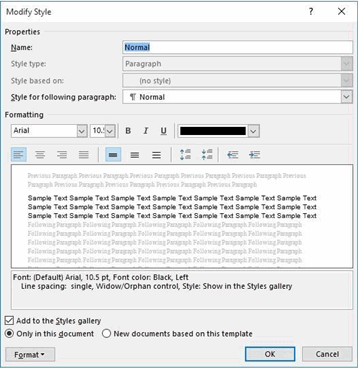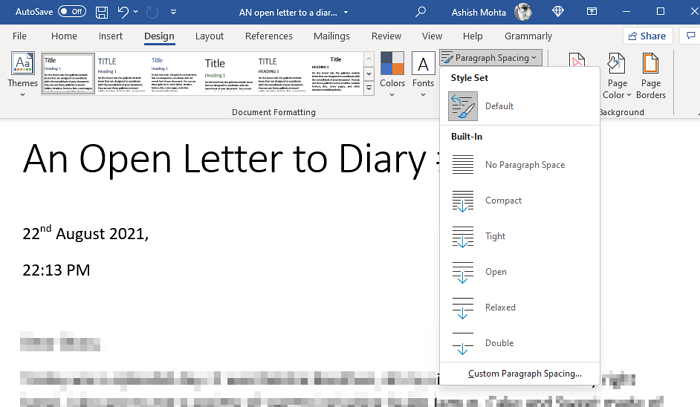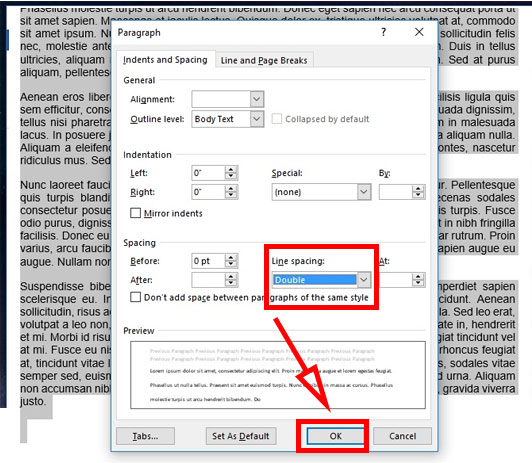

The text below has been set to Condensed, 1pt, and you can see that anything closer than that would start to become unreadable. Our example using a 10pt spacing is extreme, but it gives you a good example of how character spacing can affect your text.īy contrast, you would need to use much smaller numbers to condense the text, mostly fractions of a point. Choose a small example before going into the Font | Advanced dialog because larger selections can’t fit in the preview box.Ĭlick OK, and the spacing of your selected text will change. a higher number for Condensed moves them closer together.ĭon’t worry about that too much though, as the preview at the bottom of the dialog will show you what difference your changes are making.


On the Advanced tab, go to the Spacing dropdown and select Expanded or Condensed, depending on whether you want the letters further apart or closer together.
#HOW TO CHANGE SPACING IN MICROSOFT WORD HOW TO#
Or compress text so more fits into limited space. The Equation Editor provided with Word can be very powerful in how it displays mathematic equations. With all that said, let’s get into how to do double spacing in Word. It’s a handy trick for headings, it makes them look bigger without increasing the font size. Character Spacing | Spacing lets you stretch or compress text. In the Spacing box, click Expanded or Condensed, and then specify how much. Note: If you're using Word 2007 the tab is called Character Spacing. On the Home tab, click the Font Dialog Box Launcher, and then click the Advanced tab. In either case, you now know how to set the spacing options between sentences for Microsoft Word.Deep in the bowels of Word’s setting is a way to increase the spacing between letters. Expand or condense the space evenly between all the selected characters. Unfortunately, it doesn’t appear that your preferences currently carry over from Word 365 to the online version of Word, but that may just be a glitch caused by going back and forth between the two applications as we wrote this article. You can find the Editor settings menu within this menu, here, within Word for the Web. Again, the Punctuation Conventions are near the bottom, where you can configure the spacing between sentences. Clicking the downward-facing caret will open the menu, and allow you to access the Editor Settings. Here, you’ll need to click the Review tab to enable Editor, which is tucked all the way to the left, not the right. In Word for the Web, the menu structure currently differs. The same submenu also allows you to wage war against the Oxford comma, if you so choose. Use the Space Between Sentences control to choose between one or two spaces, or to tell Word not to check.

Scroll down to the Punctuation Conventions subheading hear the bottom. This opens another densely populated list of stylistic and grammatical conventions. Here’s the spacing control, hidden deep within Word. From here, click Proofing, and then scroll down to the line that says, “choose the checks Editor will perform for Grammar and Refinements.” There’s a small drop-down menu that selects from either Grammar, or Grammar & Refinements. That opens a messy “Word Options” menu, a holdover from earlier versions of Word. In the Word Options menu, you’ll need to hunt down the Writing Style control.


 0 kommentar(er)
0 kommentar(er)
